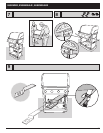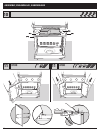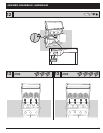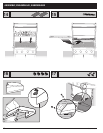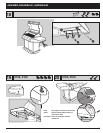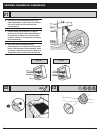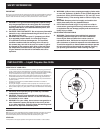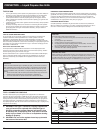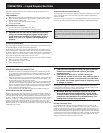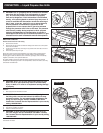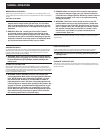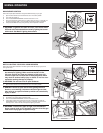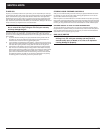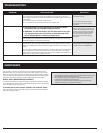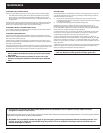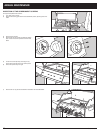Special offers from our partners!

Find Replacement BBQ Parts for 20,308 Models. Repair your BBQ today.
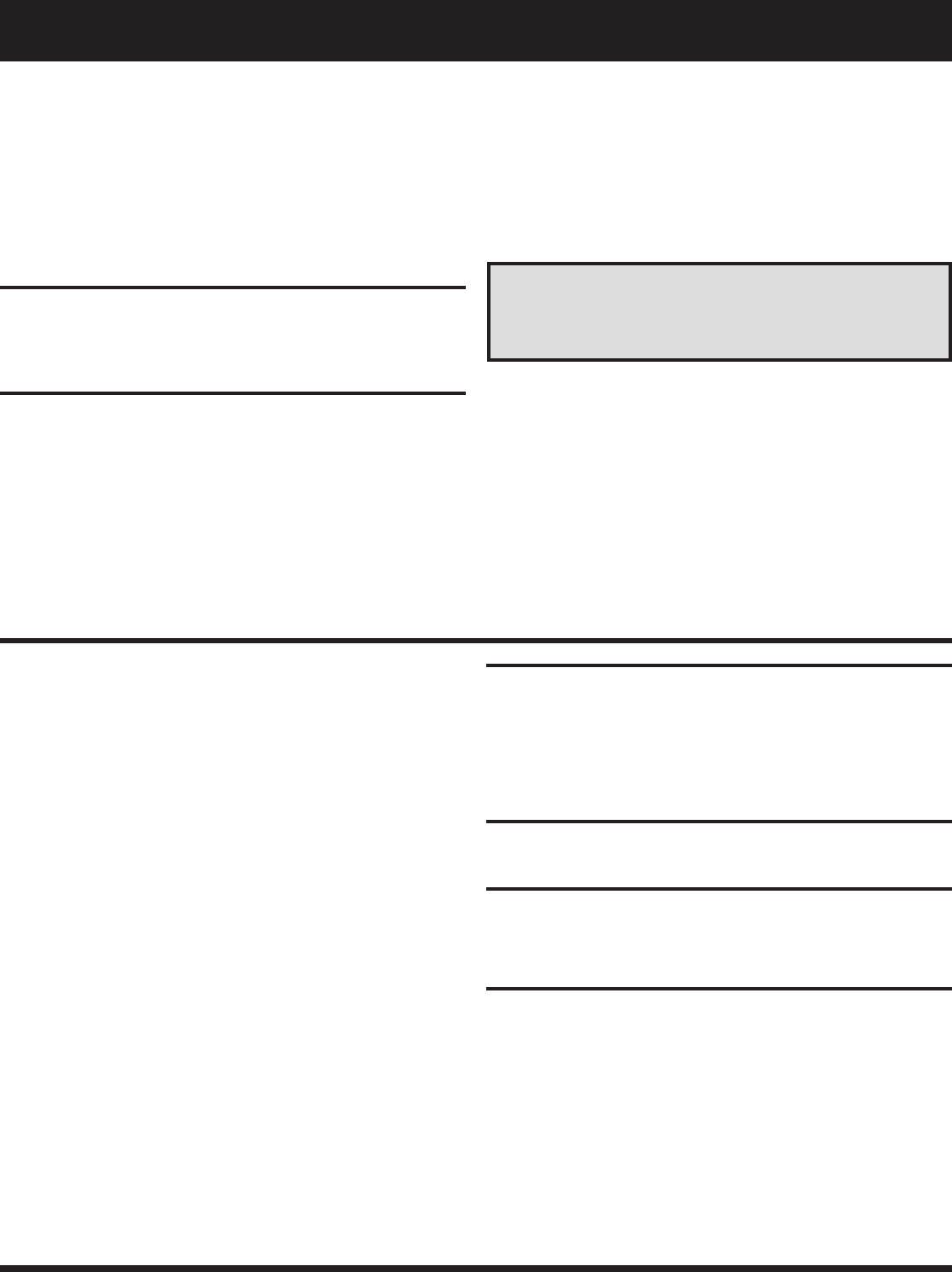
21
The propane cylinder valve connection provided with this grill incorporates the four
important safeguards listed:
HAND ASSEMBLY
1) Make sure the cylinder valve and all appliance valves are in their “OFF” positions.
2) Whenconnectingregulator/burnervalveassemblytocylindervalve,turnlarge
plastic nut clockwise until it stops.
3) Gas will not flow unless plastic nut is fully engaged.
4) HANDTIGHTENONLY.
DISCONNECTING CYLINDER
1) Turn cylinder valve and all appliance valves “OFF”.
2) Turn large plastic nut counterclockwise to disengage coupling.
m WARNING: Do not use a tool to tighten the connection.
Using a tool could damage the regulator coupling and
could cause a leak resulting in serious bodily injury or
death, or in a fire or an explosion causing damage to
property.
EXCESS FLOW CONTROL
The propane regulator assembly incorporates a flow limiting device designed to supply
the grill with sufficient gas flow, yet control any excess flow.
Rapid changes in pressure can trigger the flow limiting device. If the cylinder valve is
turned to allow gas flow while a burner valve is open, the surge of pressure will cause
the device to activate. The device will remain closed until the pressure is equalized. This
should occur within a 5-second time frame. If the flame remains low, shut off the gas
valves, wait five seconds and relight grill one burner at a time.
To ensure that this does not cause difficulty in lighting the grill, follow these instructions:
1) Make sure all burner valves are OFF.
2) Open cylinder valve and wait 5 seconds.
3) Follow lighting instructions.
IMPORTANT
When connecting or replacing any gas pipe with pipe threads or fittings, all joints must
be sealed with leak-proof sealing compound approved for use with natural and propane
gases. After making connections, check all joints for leaks using soapy water and a
brush.
LIQUID PROPANE TANK SAFETY TIPS
• Remembertohandleyourportableliquidpropanetankcarefullywhenyoutake
it to your dealer for a refill. Avoid dropping it or bumping it against sharp objects.
Liquidpropanetanksaresturdilyconstructed,butaseriesofhardjoltscould
damage the container.
• Whentransportingthetanktoyourlocalpropanegasdealer,makesurethevalve
is closed tightly and the protective cover is in place. Prop the tank securely in an
upright position so it can’t roll around your vehicle.
• Ifyouplantomakestopsforothershoppingorerrands,haveyourliquidpropane
tank filled at the last stop before going home. Again, see that the refilled tank is
secure in an upright position, and when you return home, remove the refilled tank
from your vehicle. Never leave a portable liquid propane tank inside a vehicle
which may become overheated by the sun.
• Yourlocalliquidpropanegasdealerwillgladlyofferyouadditionalsafetytips.
STORE LIQUID PROPANE TANK SAFELY
Whether you’re between cross-country treks in your recreational vehicle or looking for
a place to keep the liquid propane tank that provides fuel for your outdoor grill, keep in
mind some basic safety rules about storing portable liquid propane tanks. Don’t store
the tanks - whether full or empty - inside your home, the living area of an R.V., a garage,
basement or workshop. It isn’t likely that liquid propane will leak from the tanks, but if
it should, the fuel could be exposed to sparks from automobiles, power tools or other
appliances.WhenstoringortransportingyourLPtank,itmustremaininanupright
position.NeverlieyourLPtankdownonitssidewhetheritisfullorempty.Neverstore
a spare tank near your grill.
TEMPERATURE-ACTIVATED SHUT-OFF
The large plastic nut on the regulator assembly is designed in coordination with a check
valve in the cylinder valve to shut off the flow of gas when exposed to temperatures
between 240-300ºF.
In the event of a fire or hose break, one of the safeguards will function to control or stop
the flow of gas from the propane cylinder. Never attempt to use damaged equipment.
m CAUTION: Never transport or move your grill or grill tank
without first closing the manual valve on your liquid
propane gas tank.
m CAUTION: Place dust cap on cylinder valve outlet
whenever the cylinder is not in use. Only install the type of
dust cap on the cylinder valve outlet that is provided with
the cylinder valve. Other types of caps or plugs may result
in leakage of propane.
The best place to store a liquid propane tank is in a shady or protected spot outdoors,
behindyourhomeorgarage,butwhereitisoutofreachofchildren.Liquidpropane
won’t evaporate, because it’s in a strong, closed container. And it won’t lose any of its
clean-burning heat content, even if left outside year-round.
m WARNING: When not connected to your grill, any LP gas
tank must be stored in an upright position in a cool, shady,
ventilated, outdoor location away from your grill or any other
heat source. If this information is not followed exactly, a fire
causing death or serious injury may occur.
CONNECTION — Liquid Propane Gas Grills
FILLING A PROPANE TANK
ItisextremelyimportantthatyourLPtankbefilledproperlywhenyoutakeittobe
refilled.BesuretouseareputableLPdealerandaskhim(andwatch,ifpossible)how
hefillsthetankandknowswhentostop.AnoverfilledLPtankcanbedangerous.The
proper way to fill a tank is by weight. The empty tank should be placed on a scale and
the scale weights readjusted to a weight which would allow up to 80% of the total weight
ofpropane(LP)tobeputintothetank.Whenthisweightisreached,thefillingoperation
must be ended. If the tank is not completely empty, the scale readjustment must be
changedtoconsiderthepropane(LP)alreadyinthetank.



